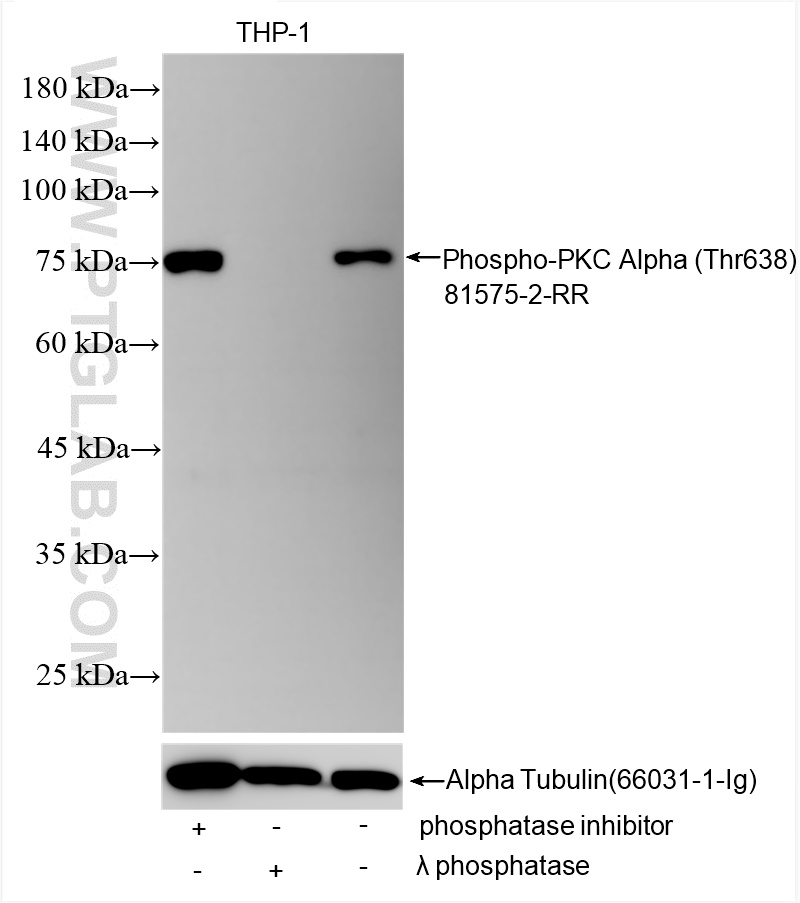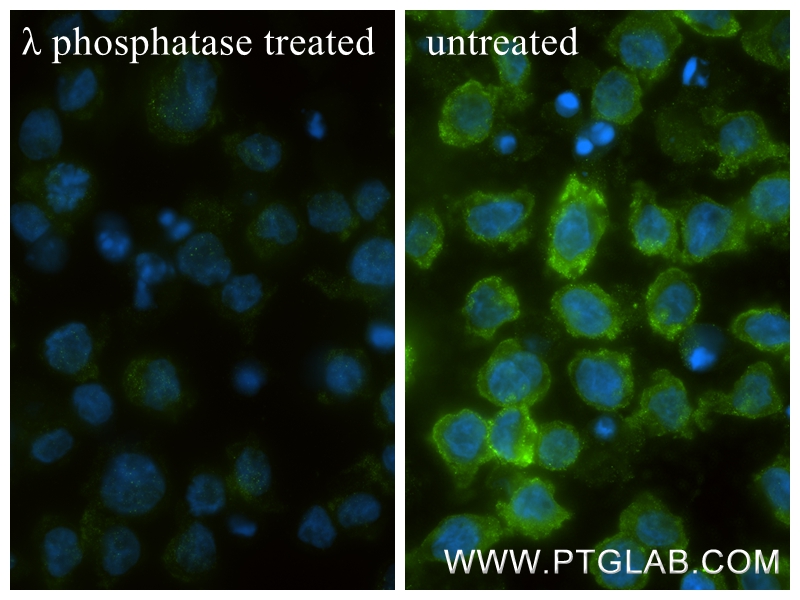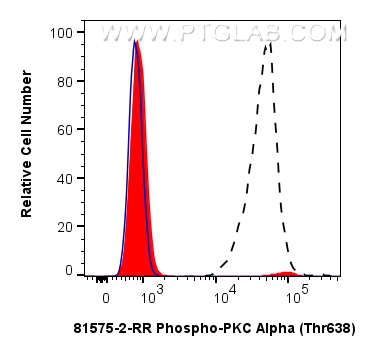验证数据展示
经过测试的应用
| Positive WB detected in | THP-1 cells |
| Positive IF/ICC detected in | THP-1 cells |
| Positive FC (Intra) detected in | THP-1 cells |
The antibody recognizes PKC Beta-II protein phosphorylated at Thr641.
推荐稀释比
| 应用 | 推荐稀释比 |
|---|---|
| Western Blot (WB) | WB : 1:1000-1:4000 |
| Immunofluorescence (IF)/ICC | IF/ICC : 1:200-1:800 |
| Flow Cytometry (FC) (INTRA) | FC (INTRA) : 0.06 ug per 10^6 cells in a 100 µl suspension |
| It is recommended that this reagent should be titrated in each testing system to obtain optimal results. | |
| Sample-dependent, Check data in validation data gallery. | |
产品信息
81575-2-RR targets Phospho-PKC Alpha (Thr638) in WB, IF/ICC, FC (Intra), ELISA applications and shows reactivity with human samples.
| 经测试应用 | WB, IF/ICC, FC (Intra), ELISA Application Description |
| 经测试反应性 | human |
| 免疫原 |
Peptide 种属同源性预测 |
| 宿主/亚型 | Rabbit / IgG |
| 抗体类别 | Recombinant |
| 产品类型 | Antibody |
| 全称 | protein kinase C, alpha |
| 别名 | Phospho-PKC, Phospho-PKC Alpha, Phospho-PKC Alpha Thr638, Phospho-PKC beta (Thr641), Phospho-PKC α |
| 计算分子量 | 77 kDa |
| 观测分子量 | 77 kDa |
| GenBank蛋白编号 | AK055431 |
| 基因名称 | PKC Alpha |
| Gene ID (NCBI) | 5578 |
| 偶联类型 | Unconjugated |
| 形式 | Liquid |
| 纯化方式 | Protein A purfication |
| UNIPROT ID | P17252 |
| 储存缓冲液 | PBS with 0.02% sodium azide and 50% glycerol, pH 7.3. |
| 储存条件 | Store at -20°C. Stable for one year after shipment. Aliquoting is unnecessary for -20oC storage. |
背景介绍
PKCs are a family of serine/threonine kinases involved in various processes in cells including proliferation, differentiation, cell survival, and apoptosis. PKC family is composed of three different subgroups: conventional (cPKC), the novel (nPKC) and atypical (aPKC). PKCα, β1, β2, and γ belong to cPKC, PKCδ, ε, η and θ are nPKC, whereas aPKC comprises of PKCζ and λ/ι. All PKCs consist of the N-terminal regulatory region and C-terminal catalytic region (kinase domain). PKCs are physiologically activated by various extracellular signals transduced by hormones, growth factors, cytokines or antigens. The presence of activated PKCs on internal membranes leads to the phosphorylation of various interacting proteins. (PMID: 32466765, PMID: 12417016)
实验方案
| Product Specific Protocols | |
|---|---|
| WB protocol for Phospho-PKC Alpha (Thr638) antibody 81575-2-RR | Download protocol |
| Standard Protocols | |
|---|---|
| Click here to view our Standard Protocols |




